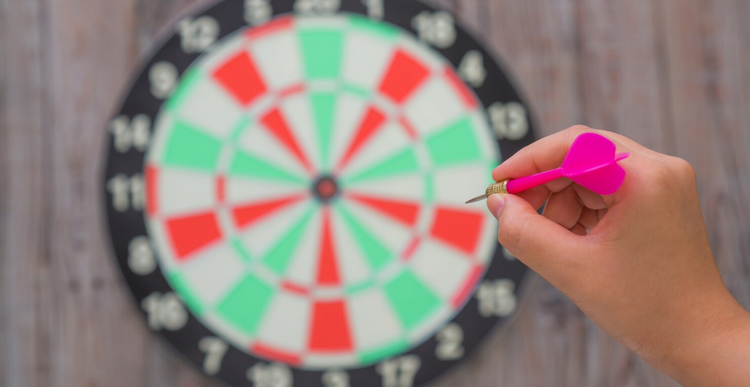It's critical to have your kids define a distinct "why" while setting goals. When children understand exactly why a goal is beneficial to them, goal setting can have a greater positive impact on them. It is more productive to say, for instance, "I will study maths educational resources for 2 hours each day," rather than "I will study geometry, algebra, and shapes for 2 hours each day since it will help me comprehend math better."
The goal-setting process should be collaborative in character. You don't want your children to feel excluded from the goal-setting process. You want them to be enthusiastic about their new objectives without sensing that having a schedule is a punishment. In order for children to develop goals that are acceptable to both parties, some kind of teamwork is required.
What Does Setting Goals Mean for Children?
Setting goals is a potent tool that encourages your children to exert their full effort. They can utilize it to direct and concentrate their study sessions. They can concentrate on the topics and places where they need to make improvements. When your children set goals that specifically target those skill sets, including cursive, nouns, and tenses, they can also improve those skill sets.
Goal setting can also be understood as a guide, which your kids can use to improve specific skills. You can help your kids understand goal setting by giving them examples of different goals and talk about the joy of accomplishing them. You should also emphasize the importance of forming play time and study time so that they can prioritize them equally.
Adding to the Four Stages for Kids' Goal Setting
It's time to concentrate on exactly how to prepare the correct goals now that we've discussed the significance of the different kinds of goals you can make with your children. These actions might serve as a useful strategy manual for teaching your children to feel proud of themselves for making the proper goals. While setting the correct goals for your children, you must adhere to five crucial measures.
1. Getting your kids excited about goals
Making sure your children are enthusiastic about your goals is one of the most crucial steps in goal-setting for kids. You want your children to develop their own goals naturally and with joy. Also, your children should feel as though they are part of a broader effort to prepare them for careers as successful musicians, actors, engineers, and entrepreneurs.
Start describing the advantages of goal-setting and how thrilling the entire process can be. You can reassure them that you'll always be there to support them while they pursue their objectives. You can discuss how everyone in the family has objectives that they are pursuing on a daily basis.
Furthermore, you have to be able to comprehend how to convey goals to a young person. Some children require a full explanation of what goal setting entails because they don't find the concept to be obvious. With them, you ought to have a conversation about what a goal actually entails.
2. Clearly outlining the ideal aims
Now that your children are enthusiastic about creating goals, it's critical to choose the appropriate ones. It is crucial to begin by asking, "What is a goal for kids?" The SMART goal structure can then be used to determine whether these goals are precise, measurable, achievable, etc.
When identifying them, you should also pay attention to several different objectives. You may make sure that your children can diversify their attention spans by providing multiple goals that are aligned. Pupils are able to set objectives for all of their courses as well as extracurricular pursuits.
Also, you should continually improve current objectives to keep them precise and reachable. Depending on your child's flexible learning ability, you can adjust the grades, scores, reading levels, and amount of time spent on certain subjects.
3. Putting in place a clear strategy
Just having an objective in mind is insufficient. Have a plan for moving forward. This can involve concrete actions your child can take to increase their success percentage. To make their goals more realistic, they could concentrate on the following strategies.
- I'll take notes in every class to increase my understanding of the material.
- To give myself more time to prepare, I'll finish my schoolwork sooner.
- I'll read additional external material to learn more about math and ELA.
- If I'm paying attention, I'll ask the teacher any questions that come to mind.
- I'll ask my buddies for assistance when I need to solve an equation.
The minor goals that must be set in order to achieve the overarching goal are also included in a concrete plan. This comprises small accomplishments that your children should prioritize in order to reach their main objective.
An illustration of this might be raising their grade from a "C" at the beginning of the quarter to an "A" at the conclusion of the year. When kids have the correct habits in place, the right goal-setting procedures can have an impact over time.
4. Recurrent evaluations and teamwork
While your child continues to work toward obtaining their objectives, you should periodically check their progress. This will encourage them and keep them rooted in reality as they work toward accomplishment. You can also keep helping them by providing them with the necessary tutoring, books, and educational resources.
Also, you want to stress the collaborative element of goal attainment. This is done to prevent your children from feeling under pressure to complete tasks faster or from developing negative self-images as a result of falling behind. You may keep track of their development and correct course as needed.
Also, you want to reward objective achievement on a regular basis. A special gift, a trip, an outside dinner, or a new educational gadget are all possible options. It can be presented to your child as a thank-you gift for all of their hard work.
In conclusion, goal-setting is a powerful tool for children to unleash their full potential and focus their efforts. By understanding the "why" behind their objectives, kids can experience a more profound positive impact on their development and growth. Collaborating with children in the goal-setting process ensures they feel empowered and motivated, rather than seeing it as a burden. As parents, it is crucial to guide and support them in defining clear and realistic goals using the SMART framework. Regular evaluations and teamwork will keep them on track, and celebrating their achievements will reinforce their dedication to pursuing their dreams. Embracing goal-setting as a family endeavor will cultivate a culture of continuous learning, self-improvement, and success for your children.









